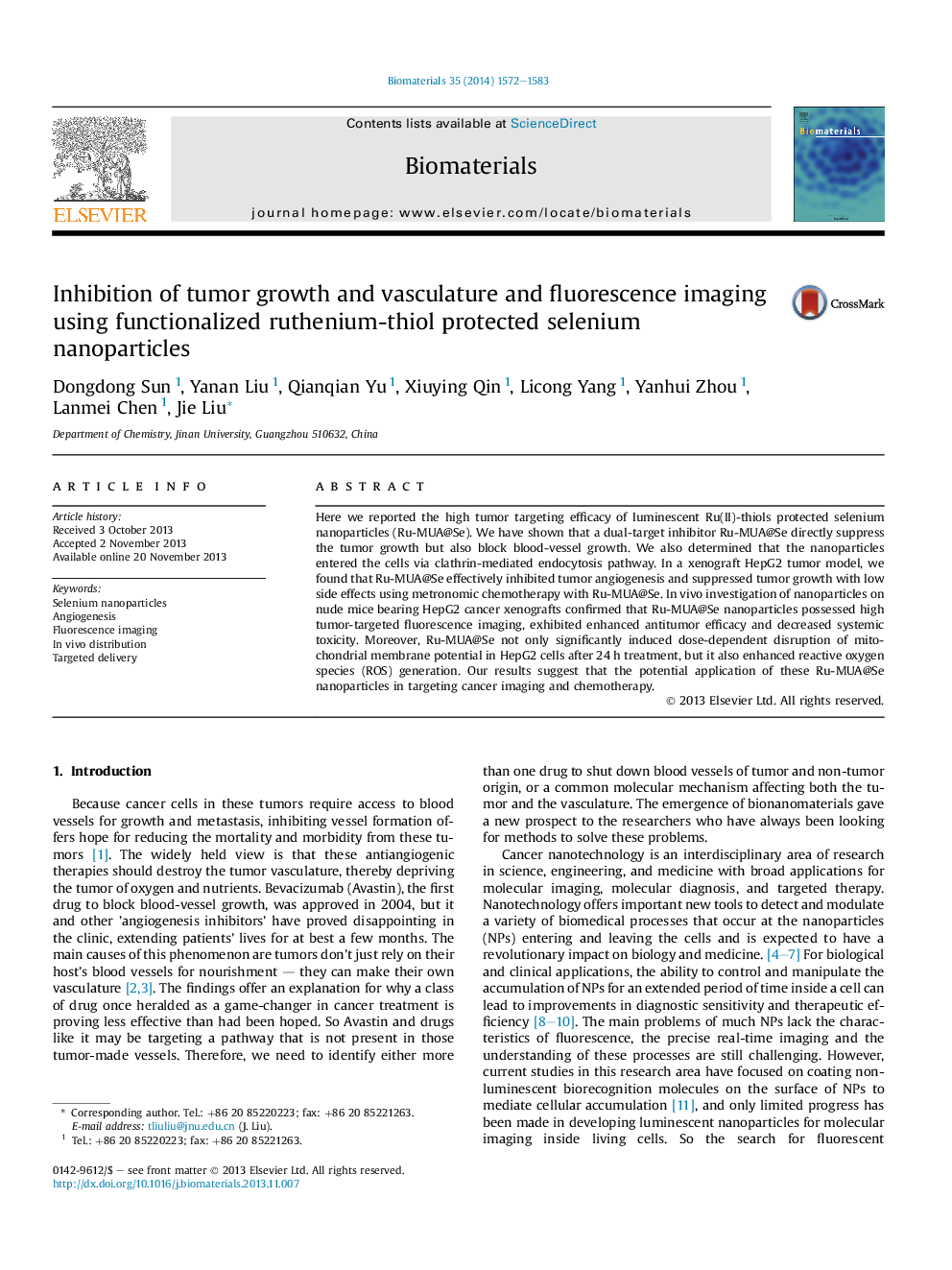| Article ID | Journal | Published Year | Pages | File Type |
|---|---|---|---|---|
| 10227450 | Biomaterials | 2014 | 12 Pages |
Abstract
Here we reported the high tumor targeting efficacy of luminescent Ru(II)-thiols protected selenium nanoparticles (Ru-MUA@Se). We have shown that a dual-target inhibitor Ru-MUA@Se directly suppress the tumor growth but also block blood-vessel growth. We also determined that the nanoparticles entered the cells via clathrin-mediated endocytosis pathway. In a xenograft HepG2 tumor model, we found that Ru-MUA@Se effectively inhibited tumor angiogenesis and suppressed tumor growth with low side effects using metronomic chemotherapy with Ru-MUA@Se. In vivo investigation of nanoparticles on nude mice bearing HepG2 cancer xenografts confirmed that Ru-MUA@Se nanoparticles possessed high tumor-targeted fluorescence imaging, exhibited enhanced antitumor efficacy and decreased systemic toxicity. Moreover, Ru-MUA@Se not only significantly induced dose-dependent disruption of mitochondrial membrane potential in HepG2 cells after 24 h treatment, but it also enhanced reactive oxygen species (ROS) generation. Our results suggest that the potential application of these Ru-MUA@Se nanoparticles in targeting cancer imaging and chemotherapy.
Related Topics
Physical Sciences and Engineering
Chemical Engineering
Bioengineering
Authors
Dongdong Sun, Yanan Liu, Qianqian Yu, Xiuying Qin, Licong Yang, Yanhui Zhou, Lanmei Chen, Jie Liu,
